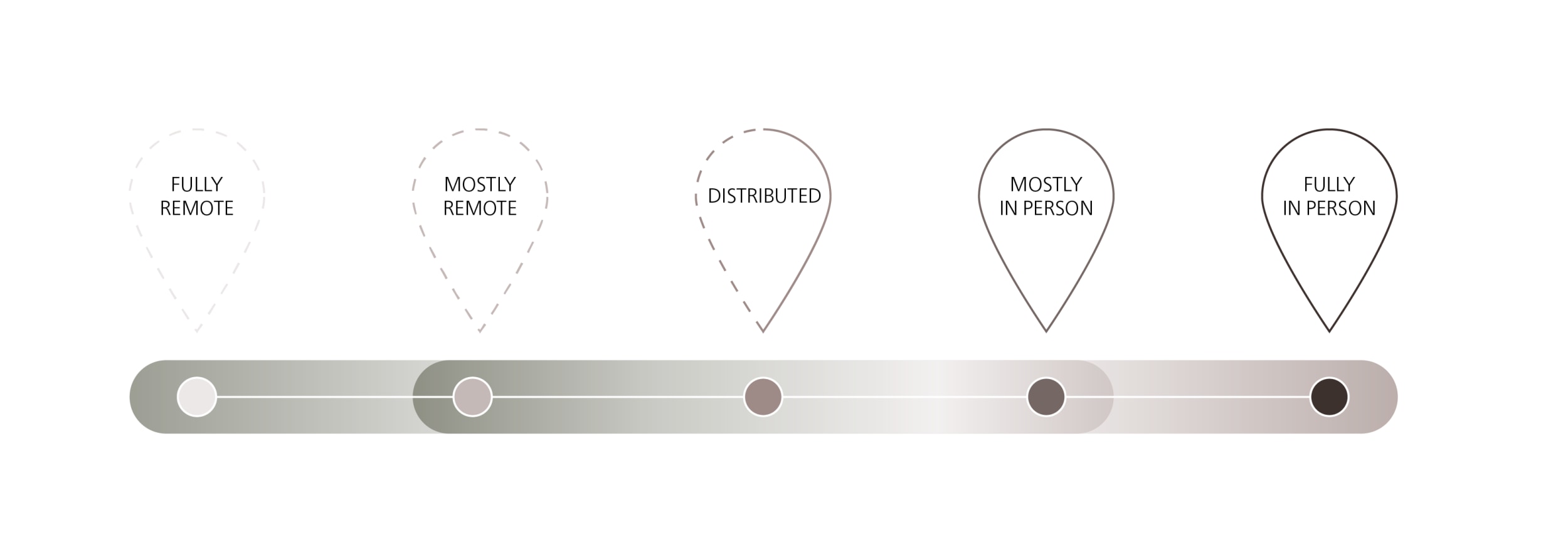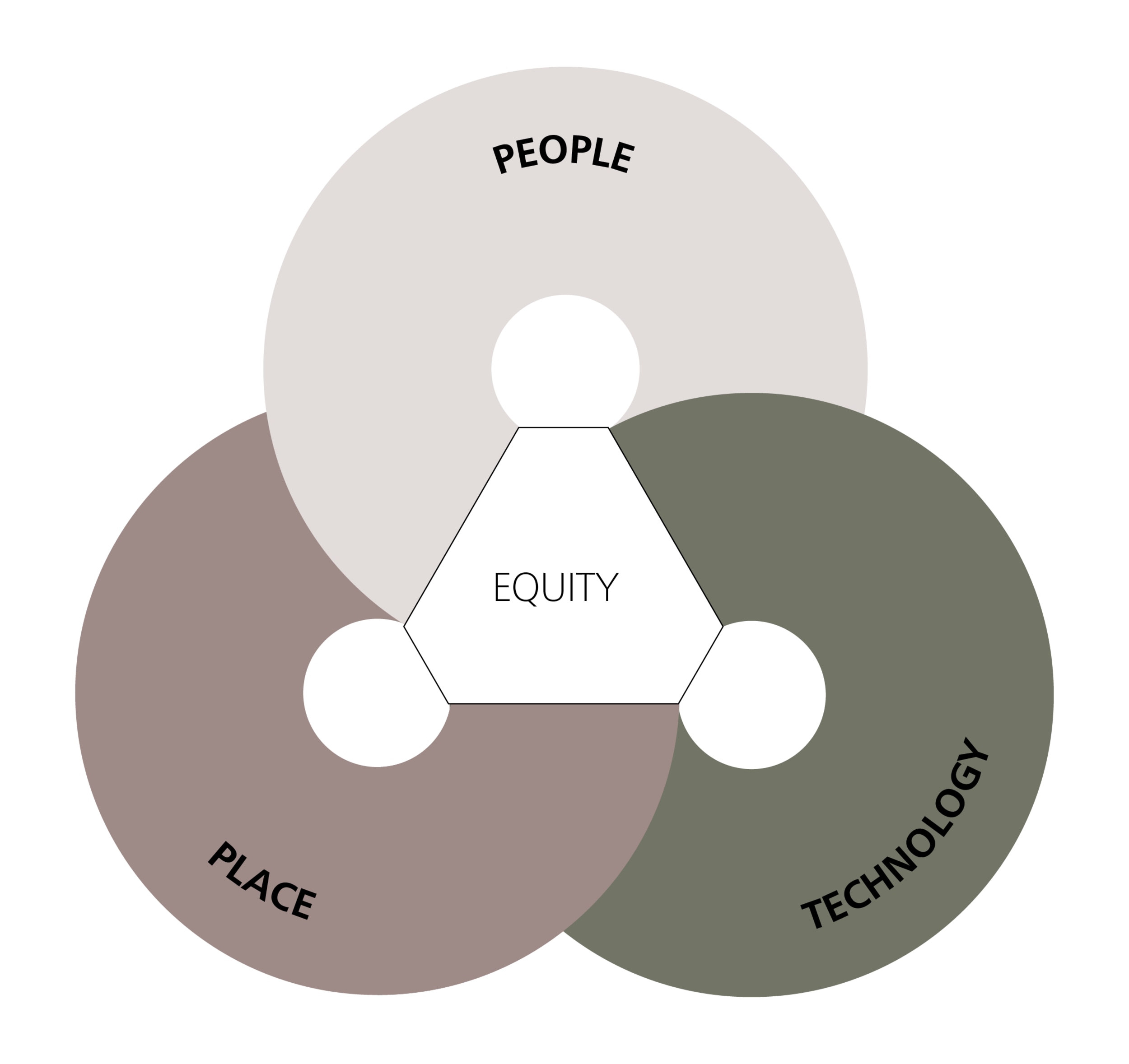
By Lauren Gant, PhD, CPE, WELL AP
Download the PDF Copy
Download
In the year 2020, the Oxford Dictionary reported that the use of the word “remotely” increased by 300% over the previous year. (Perhaps unsurprisingly, the use of the word “unmute” increased 500% over the same time period) (1). Since then, the use of the word “remote” has only increased (2), alluding to the pervasiveness of the concept of remote work – in employee action and strategy, and in the minds, concerns, and questions from employees and employers alike.
A lot has changed since the word “remotely” experienced its initial spike in popularity. However, as the ways in which we work continue to evolve, digital connection and tech-supported meetings have become cemented as a critical component for most. Regardless of a company’s in-office or work-from-home policies, collaborating digitally with teammates, clients, or global partners is paramount.
“Remote” isn’t the only word to have increased in usage in our vocabulary. Words like “inclusion,” “belonging,” and (in complement) “isolation” are also trending upward in usage. Given that the trends of “remote work” and “inclusivity” are concurrent, immediate, and interconnected, how do we think about them in relation to each other? How do we make the most of our digital interactions – both through the lens of productivity and through the lens of the human experience?
To achieve Digital Equity, it is essential to recognize that collaboration among non-co-located employees requires consideration of experience of both virtual and in-person attendees. This promotes equitable participation, fosters inclusiveness, and cultivates innovations by allowing all voices to be heard. Digital Equity is an important consideration for all types of work paradigms, from 100% remote to 100% in-person.

The work paradigm that exists between the extremes of entirely remote and entirely in-person participants is likely the most complex yet common. It is also the most probable scenario where discrepancies may arise, potentially jeopardizing feelings of equity among remote and in-person attendees. Therefore, this piece aims to outline certain Digital Equity considerations for distributed working, particularly in collaboration opportunities where employees are not co-located.
Digital Equity and Distributed Collaboration
Digital Equity requires that we fully consider three aspects of collaboration: people, technology, and place. Examining the experiences of all participants through these three aspects may suggest opportunities to change behaviors, designs, or support systems to drive a more inclusive experience.
Digital Equity: People Considerations
People considerations for Digital Equity blend with considerations for culture, protocols, etiquette, and human behavior. The goal is to make sure everyone feels as though they have a “seat at the table” - whether that table is in the physical space, or the virtual space.
Reflections to consider:
| • | Are meetings inclusive of people who represent diverse or dissenting points of view? |
| • | Can we actively check location bias when assigning project elements or distributing opportunities? |
| • | Are agendas provided with sufficient detail and preparation time to give participants the option to prepare to feel comfortable speaking up? |
| • | Is there a thoughtful rotation of meeting responsibilities such as reservations, note taking, and rearranging the room, ensuring these tasks are shared by all? |
Digital Equity: Technology Considerations
Technology considerations for Digital Equity focus on the ease and accessibility of the tools we use to connect when we are not co-located. The goal is to make interaction effortless and streamlined, ultimately elevating the productivity for all participants.
Reflections to consider:
| • | Are visual aids and notes visible or accessible to all participants in real time? |
| • | Can virtual participants be seen by all in-person participants, and vice versa? Does it feel like a cohesive grouping of all participants or an afterthought? |
| • | Can all voices be heard well? Can meeting leaders recognize and give space for remote participants to speak? |
| • | Are virtual platforms, connection methods, and displays intuitive to use and accessible? |
Digital Equity: Place Considerations
Place considerations for Digital Equity are, at their core, Inclusive Design considerations. The goal is to allow all participants to be “present” in-person and virtually in ways that promote feelings of belonging, safety, security, and well-being. Inclusive Design principles consider the many modalities of diversity and strive to create an ecosystem of spaces where employees feel comfortable. Full description of Inclusive Design can be found here.
Additional reflections for in-person place considerations include:
| • | Are the meeting spaces conveniently located for all participants attending and mindful of any physical and mental barriers that may exist (e.g. accessibility of space, proximity to CEO’s space)? |
| • | Is the size of the collaboration space large enough to accommodate all in-person participants in a way that is comfortable and allows for easy views of monitors? Alternatively, is the space too large such that it feels cavernous or ominous? |
| • | Are acoustics, lighting, and comfort appropriate for the types of collaboration? |
Additional reflections for virtual place considerations include:
| • | Do remote participants have tools to encourage healthy posture and proper lighting? |
| • | Are acoustics and distractions manageable (e.g. pets and other “co-workers”)? |
| • | Does the location of workspace infringe on the perceived ability to separate home and work? |

The Importance of Digital Equity:
Regardless of what the working environment looks like today, digital collaboration is an integral component of many knowledge workers’ days. When work is happening in distributed spaces, the need for intentionality is magnified. We believe in being mindful of the experiences of all participants – regardless of location. We believe that with careful and mindful planning, we can foster better collaboration, improve efficiencies, and most importantly, impart a feeling of inclusivity.
Considerations for Digital Equity bring us together, even when we are apart.
Sources:
- https://languages.oup.com/wp-content/uploads/oxford-languages-words-of-an-unprecedented-year-2020.pdf
- https://www.oed.com/dictionary/remote_v?tl=true&tab=frequency



